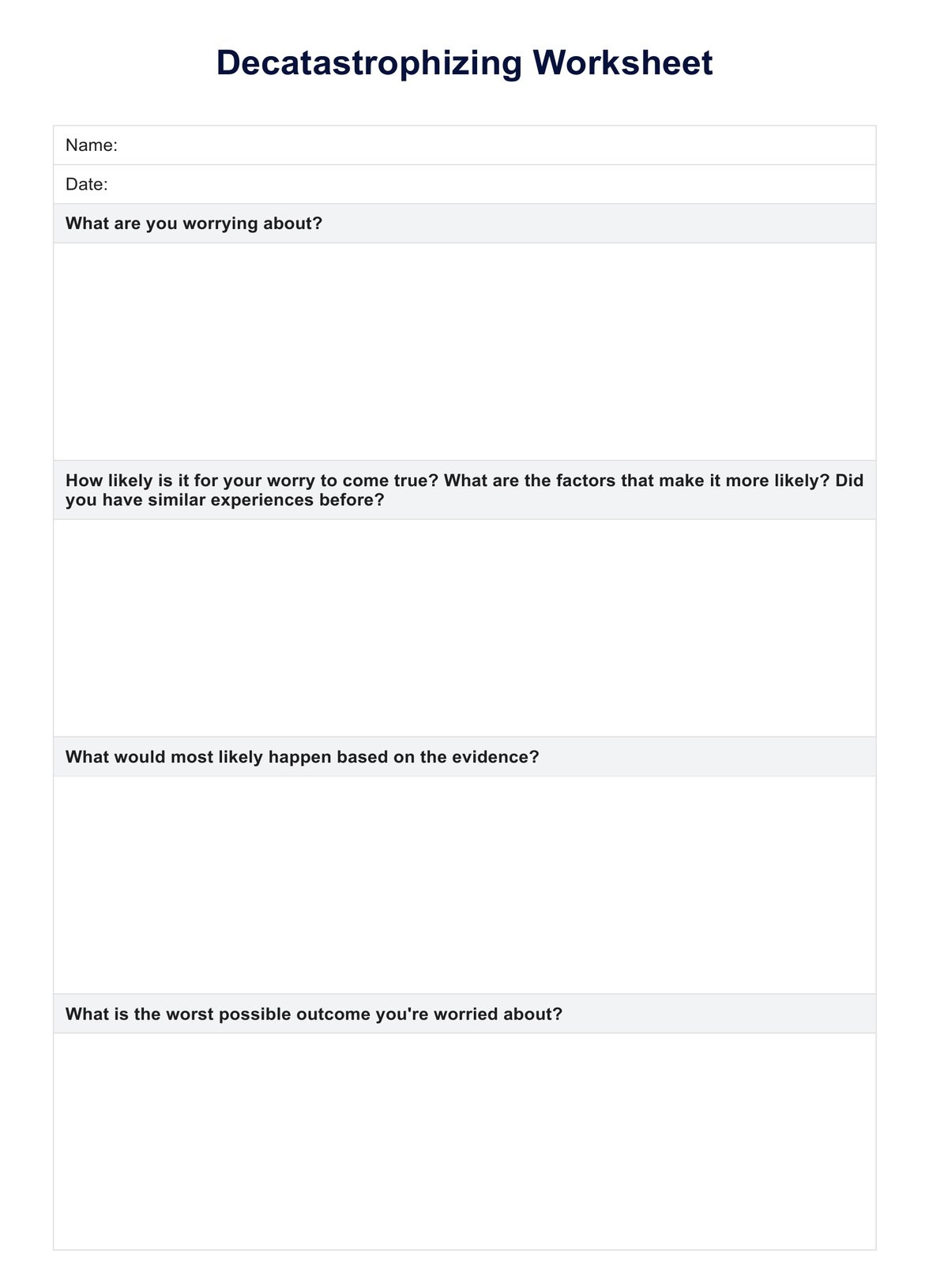Decatastrophizing worksheets were created to help identify and properly understand what a person is worrying about, what they are fearing, and the factors that contribute to them thinking that certain outcomes will happen.
In the case of this specific decatastrophizing worksheet, this includes sections where they can think about possible good outcomes and help inspire working towards reaching those.












